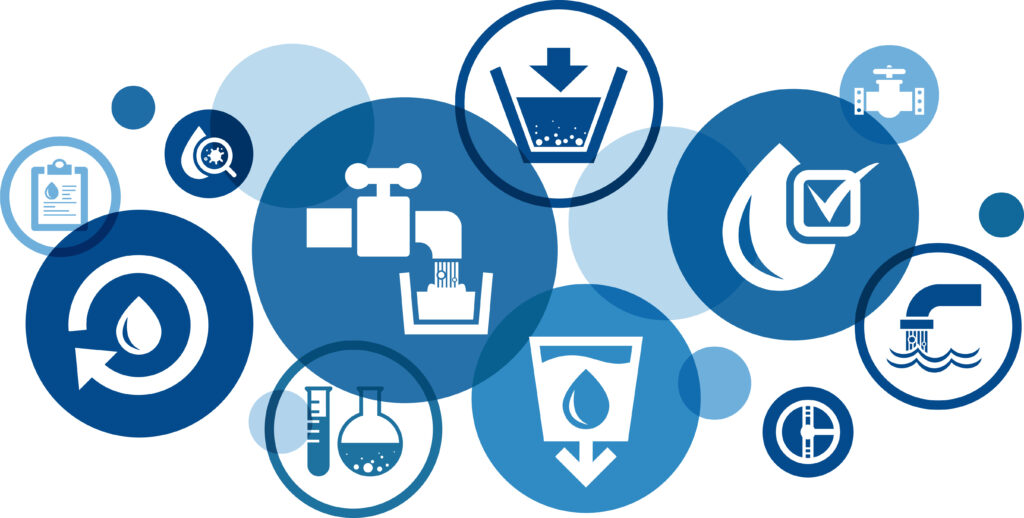Detecting Legionella in water systems is a critical step in preventing outbreaks of Legionnaires’ disease. However, not all detection methods are created equal. One of the biggest challenges in water testing is differentiating between viable and non-viable cells. This distinction is essential for making informed decisions about water system safety and compliance, especially in high-stakes environments like hospitals, office buildings and public spaces.
In a previous blog, we explored the history and significance of Legionella testing, from its discovery during the 1976 outbreak to the risks posed by modern water systems. We also highlighted the limitations of traditional culture-based detection and the need for advanced tools to improve accuracy and speed. In this second blog, we will dive deeper into the challenges of Legionella detection, the science behind qPCR technology and how an innovative approach to qPCR addresses these challenges. Finally, we will demonstrate how this technology fits into established workflows to deliver reliable, actionable results for water safety.

Challenges in Legionella Testing
Legionella is a highly adaptable genus of bacteria that has evolved to thrive in both natural and human-made water systems. This adaptability is driven by two key traits: the ability to exist as both free-floating (planktonic) cells and within protective biofilms, and a symbiotic relationship with freshwater protozoa1. These traits enable Legionella to persist in diverse ecosystems, creating ongoing challenges for researchers working to detect and eradicate the bacteria.
Biofilms are structures composed of microbial communities embedded in a self-produced matrix that provides a protective barrier against environmental stressors like heat, chlorination and other disinfection methods. Within biofilms, Legionella remain viable for extended periods, shielded from treatments that would otherwise kill free-floating bacteria. Studies have shown that biofilms can harbor Legionella subpopulations in a dormant state, which means the bacteria are still viable under favorable conditions, posing ongoing public health risks even after disinfection efforts2.
Another key survival mechanism for Legionella is the symbiotic relationship with freshwater protozoa. Legionella, a single-celled organism, behaves as a parasite by invading and replicating inside multicellular1. The protozoan hosts provide a protective environment and prime the Legionella for infection in human hosts by mimicking the way they invade macrophages in the lungs3. Protozoa act as mobile reservoirs, transporting Legionella to new environments and further complicating eradication efforts.
Legionella can adapt to diverse environments, from natural lakes to the complex plumbing systems of urban infrastructure, posing significant public health challenges. Therefore, detecting and monitoring Legionella effectively requires tools that account for biofilm formation or parasitic relationships with other organisms that allow them to evade traditional detection methods.
Effective Legionella Testing with Viability PCR
Traditional culture-based methods, long considered the gold standard for detecting Legionella, fall short in several ways. For example, traditional methods require 7–10 days to yield results and often fail to detect bacteria in the viable but non-culturable (VBNC) state, where Legionella remain infectious but do not grow on culture media. Additionally, biofilms and intracellular Legionella within protozoan hosts often dodge detection entirely, further complicating assessments of water system contamination. These limitations emphasize the need for faster, more accurate and comprehensive approaches to detect Legionella in complex environments.
Quantitative polymerase chain reaction (qPCR), a workhorse in molecular biology, offers a transformative solution for persistent Legionella. qPCR detects and quantifies DNA by amplifying specific genetic sequences in real time. Unlike traditional PCR, which only provides qualitative results indicating the presence or absence of a target, qPCR provides specificity and quantification. To put it simply, qPCR is like counting the number of red and blue marbles in a jar rather than just confirming that the jar contains marbles of those colors. qPCR relies on fluorescent dyes or probes that generate signals proportional to the amount of amplified DNA, allowing for precise, real-time monitoring.
However, traditional qPCR has one significant limitation—it cannot differentiate between DNA from live bacteria and DNA from dead or non-viable cells. Researchers at Promega have developed a Legionella testing workflow that includes a viability testing step using the Viability PCR Reagent System. Like traditional viability dyes such as propidium monoazide (PMA) or ethidium monoazide (EMA), this system uses a DNA-binding dye to block amplification from dead cells. However, unlike PMA and EMA, it does not require specialized light activation, reducing both handling steps and the need for additional equipment. This streamlined workflow improves user safety and minimizes processing time, while still ensuring that only DNA from viable Legionella cells is detected—providing a more accurate assessment of contamination levels, sanitation efficacy and potential health risks.
The Legionella testing workflow is designed for flexibility, supporting both manual and automated DNA extraction workflows to meet the needs of different laboratories. The kits also allow for the simultaneous detection of multiple targets, including Legionella species, L. pneumophila, and L. pneumophila Serogroup 1. This multiplex capability enhances testing efficiency, providing a more comprehensive picture of contamination levels in a single assay.
To learn more about the Legionella Viability PCR workflow, check out this comprehensive page.
References:
- Pereira, A., Silva, A. R., & Melo, L. F. (2021). Legionella and biofilms—Integrated surveillance to bridge science and real-field demands. Microorganisms, 9(6), 1212. https://doi.org/10.3390/microorganisms9061212 ↩︎
- Kanarek, P., Bogiel, T., & Breza-Boruta, B. (2022). Legionellosis risk—An overview of Legionella spp. habitats in Europe. Environmental Science and Pollution Research, 29, 76532–76542. https://doi.org/10.1007/s11356-022-22950-9 ↩︎
- Yang, J.-L., Li, D., & Zhan, X.-Y. (2022). Concept about the virulence factor of Legionella. Microorganisms, 11(1), 74. https://doi.org/10.3390/microorganisms11010074 ↩︎
Anna Bennett
Latest posts by Anna Bennett (see all)
- No More Dead Ends: Improving Legionella Testing with Viability qPCR - March 18, 2025
- Strengthening Water Safety Measures with Advanced Detection - February 18, 2025
- Understanding and Combating Legionella in Water Systems with Viability PCR - January 21, 2025
